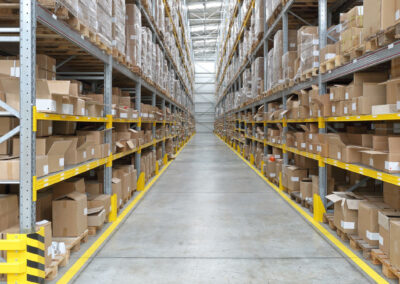Why Black Week is the time to get your logistics right
“If my buyers are bargain hunters, I’m sure they’re willing to wait a few extra days for their shipment”. Whoever believes that is shooting themselves in the foot.
First shot: Hypercritical consumers
Even during Black Week, consumers are not willing to tolerate logistics errors. Deliveries that take longer than promised, or are incorrectly or incompletely packaged, will have the same unpleasant consequences during Black Friday as they do during the rest of the year: bad reviews, sharing of the negative experience on social media, no more visits to the store.
Second shot: Missed potential to gain regular customers
Second, of course, Black Friday attracts countless new customers to your store who are unfamiliar with your offerings or your usual service. Regular customers can be quickly reassured with a friendly email if something goes wrong with their order. New customers, on the other hand, will be quick to blame you for the late delivery. If you have logistical problems during the black week and the peak season, you run the risk of losing thousands of potential repeat customers.
From a business perspective, this is fatal, as repeat customers account for an average of two-thirds of a store’s sales.
The 5 most important aspects of peak season logistics
A perfectly functioning logistics chain is almost more important during the most important time of the year in eCommerce than during the rest of the year. To ensure that everything runs smoothly, pay special attention to the following five aspects:
#1 Stock up ahead of time
Tip number one doesn’t sound like much of a surprise: During Black Friday, when some stores do as much business in a single day as they do in a month, your inventory should be well stocked.
But don’t make the mistake of ordering randomly from your vendors. Analyze current trends and review your previous years’ figures to find out which items sell particularly well during Black Week. An experienced fulfillment partner will help you with this forecast – because they, too, benefit from early planning.
#2 Ensure scalable warehouse capacities
When it comes to storing significantly more merchandise, the following problem often arises: If you order tens of thousands of products for one season of the year, you may exceed your warehouse capacity. At the same time, you don’t want to lease storage space you don’t need for the rest of the year.
With events like Black Week and Cyber Monday in mind, we recommend a storage system with scalable capacity. That way, space and capacity grow with your needs. You stay flexible and have the right conditions to make the most of the peak season.
#3 Ensure real-time synchronization
Despite all the precautions you have taken so far, it can and will happen that you run out of a particularly popular item. If this is not immediately visible on the product page, you risk unhappy customers.
Instead of manually reconciling orders and stock via Excel lists and uploading to FTP servers, this can be done automatically. With a platform like Alaiko, stock levels are automatically synchronized with your store and you get a real-time overview of all orders and stock.
Not only does it allow you to order new stock instantly and automatically, but it also helps you avoid disappointing bargain hunters – even when they’re glued to their screens after midnight trying not to miss your deals.
#4 Don’t Leave Customer Service Alone
A hundred percent increase in sales during Black Friday may sound great. But it also means a lot of work. After all, every item sold can lead to returns or inquiries to your support team. If you don’t do this well, you’ll end up with unhappy customers and bad reviews; no one likes to wait days for an email response or get stuck in a queue.
So make sure your support team is prepared to handle many times the usual volume of inquiries well in advance of the black week.
The easiest way to take the pressure off your team is to implement automated processes: If customers can initiate a return or address correction themselves, your support team will have much more time to deal with the more complicated cases.







